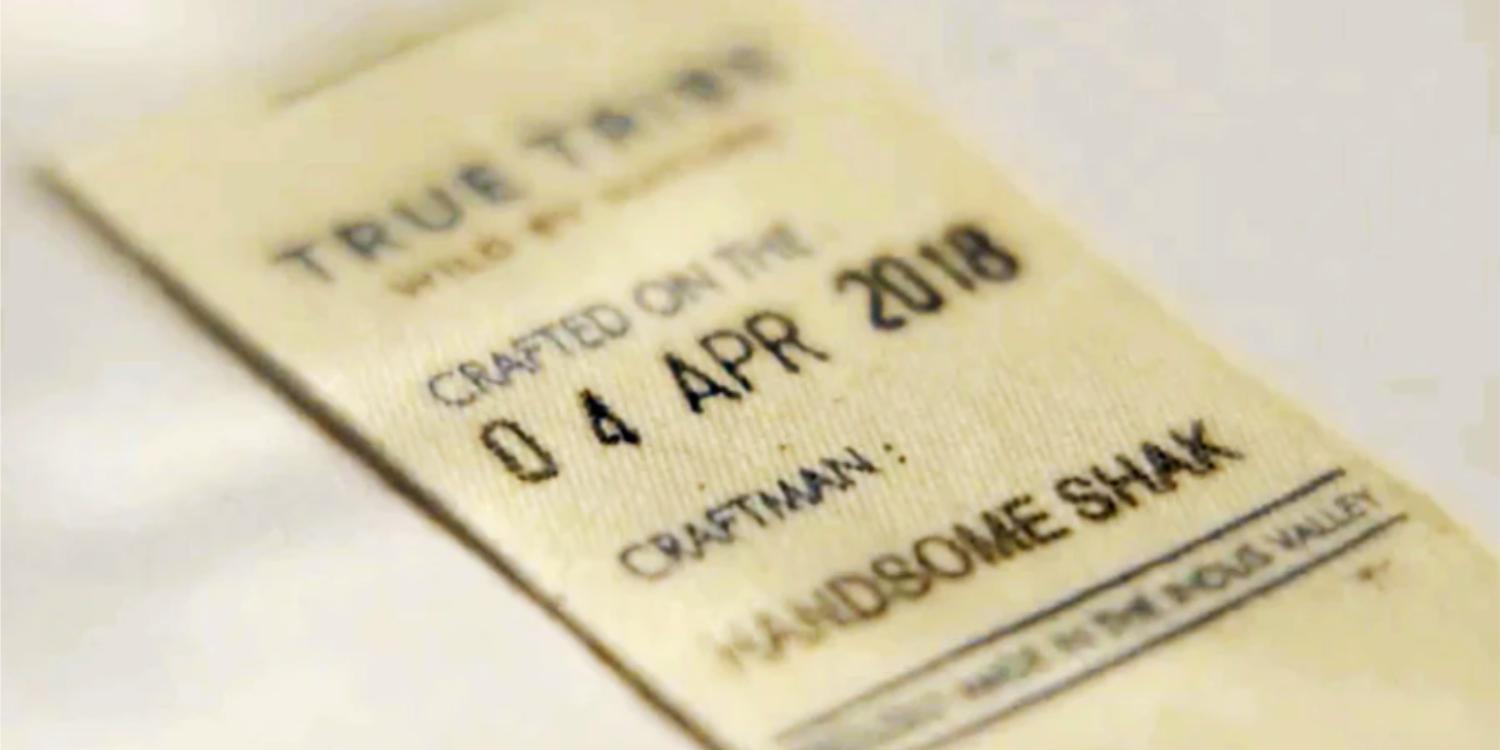
A surprisingly simple guide to shopping sustainable fashion
Garments & apparel are one of the most challenging industries to human rights and the environment. It is becoming an open secret that the sector has recourse to large carbon footprint outsourcing, criminal child labour and low wages, negligent chemical waste disposal, and 1.715 billion tons of CO2 released a year to keep up with the fashion industry’s high turn-over. Contrary to what many believe this lack of responsibility isn’t restricted to developing countries, even the L.A Fashon district has sweatshops operating illegally.

How are consumers supposed to shop fashion and still feel good about it? Amid the plethora of information surrounding textile production how can we be sure when buying a shirt that we’re not polluting the earth or harming another human being?
The truth is that buying clothing will always bear a cost. However, there are ways in which we can minimize that cost and send a signal to the industry that we want to consume clothes differently. Some of these ways are even quite accessible.
Here is our simple guide to shopping fashion responsibly:
1- Shop Online (Surprise!)

Don’t feel guilty about ordering items online. First, because a UPS, FedEx, or USPS truck is like public transportation for your clothing: efficient at moving a lot of stuff with minimal fuel. Second, your clothing probably comes through a distribution center, skipping the process of going to the store at all and going straight to you. And according to multiple studies, online shopping has a much lower environmental impact than brick-and-mortar shopping. It may feel wrong to get an item of clothing in a plastic bag in a box, but rest assured that if it goes to a store instead, it’s also showing up in a plastic bag — the bag’s just gone by the time you see it on the rack.
Another benefit of shopping online is the opportunity to be more thoughtful and discerning with what you buy. In a physical store, it might not be possible -or occur to you- to research every brand you encounter then and there on your phone. But when you’re home on the internet you have more time and resource access to do some deeper digging.
2- Look for these Fabrics

It’s pretty hard to avoid polyester altogether, especially if you enjoy at leisure clothing, swimsuits, or anything with stretch. So look for polyester that’s made of recycled water bottles, fishing nets, carpet, and other post-consumer products. These products financially support the recycling industry and help to keep plastic waste away from the landfills and oceans.
Choose Tencel over bamboo rayon. The production process of bamboo rayon releases a lot of chemicals in the air and causes deforestation. The Tencel alternative, created by the Austrian company Lenzing, is made from sustainably sourced eucalyptus trees in a closed-loop process that ensures no toxins are released into waterways.
Silk, hemp, linen, and wool are all natural, low-impact textiles (although extreme vegans should know that silk-making uses silkworms, some of which die in the process).
Favour organic cotton over regular cotton but keep in mind that cotton production requires a lot of water.
Leather is tricky, but know that Vegetable tanned leather doesn’t use heavy metals in its fabrication and that other alternatives are gradually coming like Piñatex, which is made from pineapple leaf waste.
3- Look for certifications

There are a few gold-standard certifications that indicate that an impartial deep dive into a product’s supply chain has been conducted. OEKO-TEX is an independent test and certification system for textiles, and it offers multiple levels of certification, the most basic of which indicates that the product is free of hazardous chemicals.
The next level up concerns whether the textiles are made in socially and environmentally responsible conditions. GOTS (Global Organic Textile Standard) is a certification for textiles that contain “a minimum of 70% organic fibers.”
Forest Stewardship Council certification indicates that any trees involved were sustainably harvested.
Fair Trade certification indicates that the factory workers are paid at least the minimum wage, and that the working conditions are safe.
4- Look for brands that treat and pay their artisans fairly
Picturing the positive social impact of a fairly made garment is much more inspiring -and easy- than figuring out the environmental impact of your garment’s entire supply chain (production, dying, finishing, shipping etc.).

Fair brands tend to showcase their working conditions; True Tribe has several videos of its atelier and takes great pride in the well being of its tailors. Many other fair trade brands, like Lemlem, Voz, Siizu, Brother Vellies, Ace & Jig, Uniform, and Manos Zapotecas have photos and information on their websites about their workers or the factories they use. Other brands, like Reformation and Saint James, give factory tours. The brands Naja and Nisolo give you a report on working conditions, pay, and benefits, plus how getting paid to use their community’s traditional skills positively impacts a worker’s community.
We could debate all day about the relative merits of recycled polyester versus organic cotton but it’s hard to argue with a worker getting paid a fair wage in good and safe working conditions.

5- Buy second hand or rent
The overabundance of orphaned clothing makes second-hand the perfect solution for fashion addicts feeling guilty about their environmental footprint and wallet. It prevents production of toxic or exploitative new clothing while keeping existing textiles out of the landfill or shipped overseas. Second-hand stores are almost all charitable, locally or family-owned, so you direct your dollars away from multinational corporations onto small businesses.
Also, contrary to popular opinion second-hand isn’t about ‘old used up clothes’; in many cases it’s a cheap way to get fresh threads sometimes with the tags still on.
Keep in mind also that second-hand doesn’t exclude high quality luxury. Websites like Vestiaire Collective and The RealReal sell predominantly upscale designer items.
6- Show your brand you care
So you’re really digging Saint Laurent’s new Spring-Summer ready to wear collection. Not sure where they produced that shirt you really like, or if the cotton is organic. What should you do? It’s simple: email or tweet! Show them it matters.
“Tweets, emails, questions asked in retail stores — if frequent enough, these communications get laddered up. I know many Corporate Social Responsibility teams that then use these anecdotes as ‘proof points’ to show that consumers are demanding transparency,” says Jessica Radparvar, founder of the social impact communications consultancy, Reconsidered, “that can in turn help them get buy-in, approvals, and funding for projects they want to push forward”.
7- Make your wardrobe timeless
Buy less. If you must buy, go for higher quality items that last. Again, simple.
8- Donate to NGOs & Watchdogs

Go beyond responsible consumption and give to organizations that are trying to create systemic change. You can help send a Bangladeshi garment worker to college, fund Canopy’s efforts to save the rainforest from destruction by rayon-viscose pulping mills, or plant trees with 8 billion trees, or donate to Greenpeace or Natural Resources Defense Council, which respectively combat toxic garment factory effluent and increase the energy efficiency of factories, or become a supporter of Project JUST and their deep research on the sustainability and ethicality of large brands.
There is no unique paved way to be a conscious consumer, just like there’s no one way to dress yourself. As the sustainable fashion movement grows and evolves, dressing yourself with thought will only get easier.





Leave a comment
This site is protected by hCaptcha and the hCaptcha Privacy Policy and Terms of Service apply.